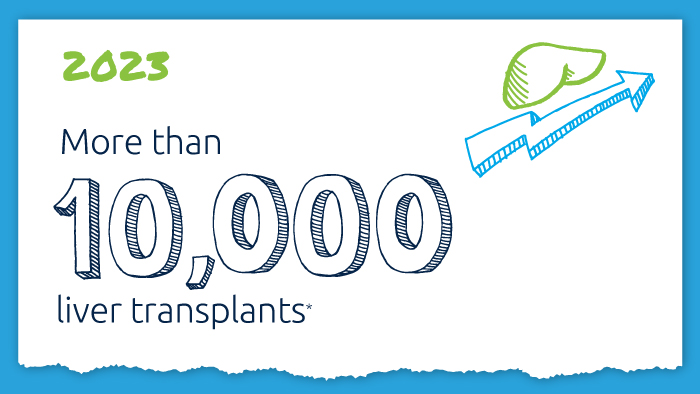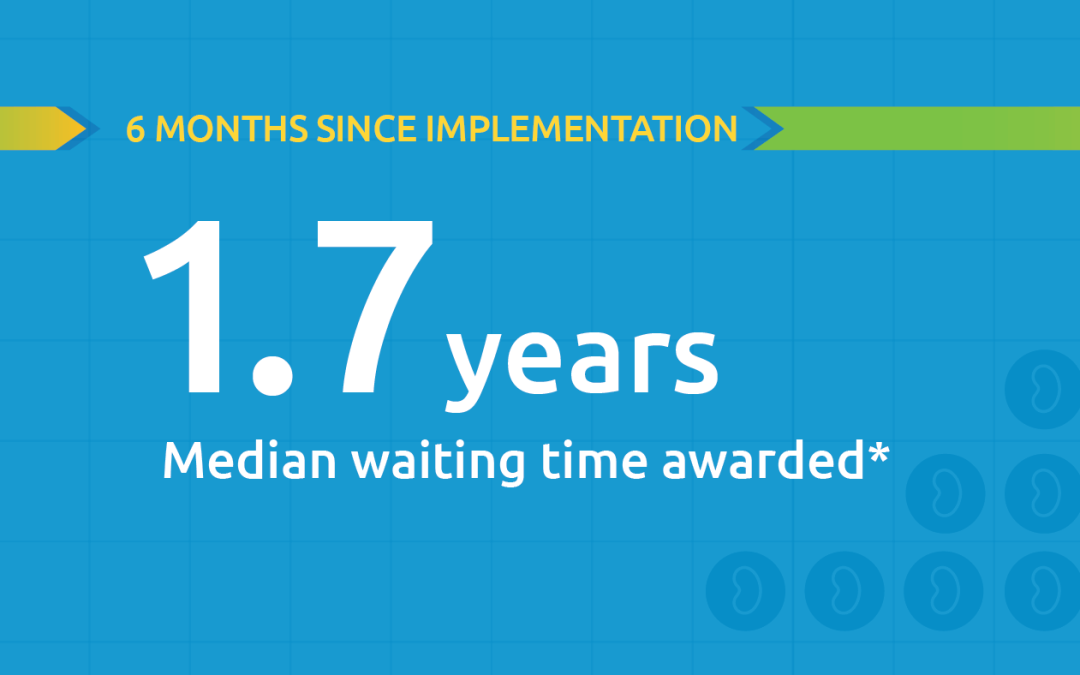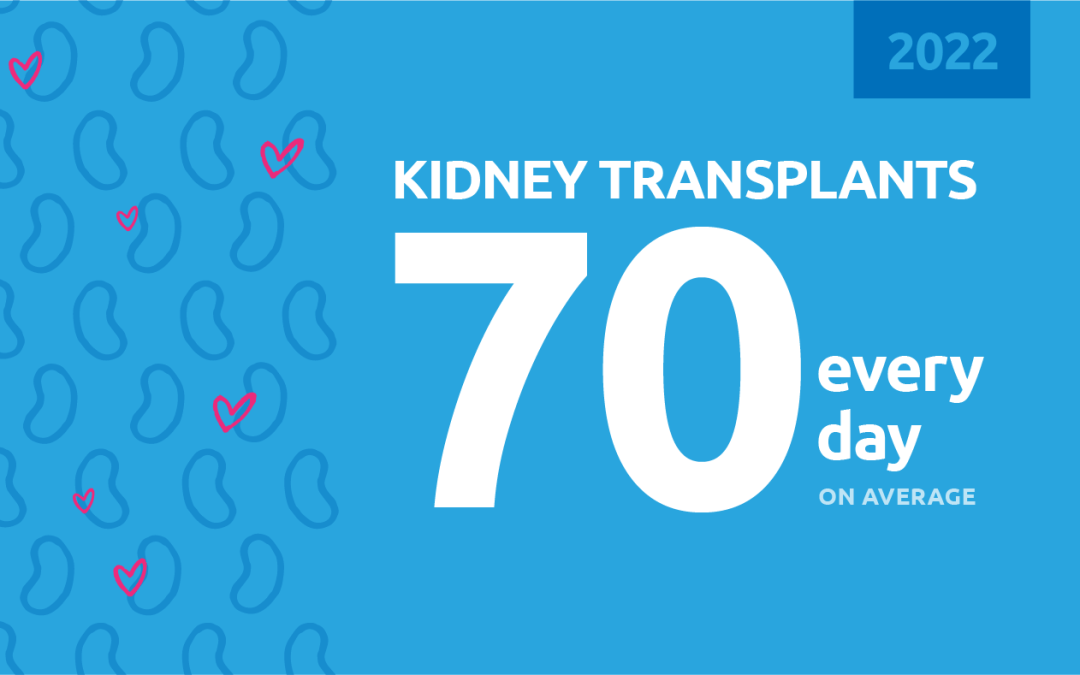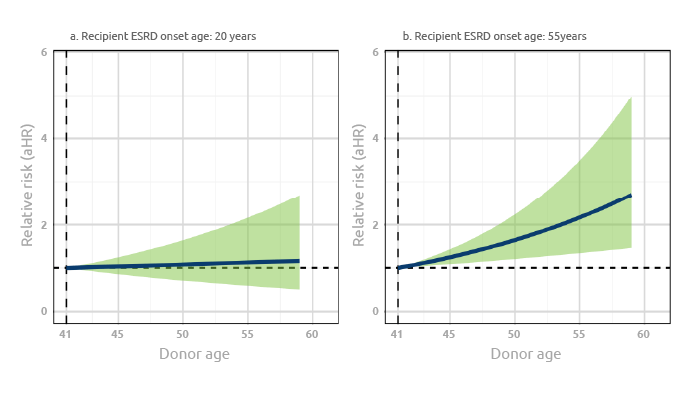
Data reveal associations between related transplant recipient’s age at end-stage renal disease onset and the donor’s risk of ESRD.
in focus
White first-degree related LKDs' ESRD risk relative to median donor age, by recipient ESRD age

United Network for Organ Sharing researchers found evidence for the first time that the association between a living donor’s age at donation and a related recipient’s age of end-stage renal disease (ESRD) onset can help predict the donor’s risk of also developing ESRD. Jennifer Wainright, Ph.D., UNOS senior research scientist, presented the findings at the 2020 American Transplant Congress virtual poster session in May.
The research team built upon work in an article first published in the February 2018 issue of the American Journal of Transplantation. The researchers investigated how different patterns of ESRD within a family might affect a donor’s risk of ESRD post-donation. Previous studies show donor age is related to risk of ESRD – older age at donation being riskier for white donors and younger age at donation being riskier for black donors, but researchers wanted to see if the transplant recipient’s age matters. What they found:
- Among white related donors, older donor age was associated with higher risk if the related recipient first developed ESRD at an older age, such as 55 years old
- Older donor age was not associated with higher risk if the related recipient developed ESRD at a younger age, such as 20 years old
Researchers studied white first-degree living kidney donors who donated in the U.S. between 1994 and 2018. The donors in the cohort were followed for a median of 14 years, and the maximum was just under 25 years. There were too few cases in other ethnic groups for these analyses.
Analyzing data from Organ Procurement and Transplantation Network (OPTN) and the Centers for Medicare and Medicaid Services (CMS), 115 out of 45,700 white first-degree related donors developed ESRD through the end of the study. For those 115 donors, the median time between their donations and onset of ESRD was just under 14 years.
As in previous research, white first-degree related donors had an increased risk of post-donation ESRD if the donor was male, had kidneys not working as well as they should, were overweight or had high blood pressure.
The results illustrate that estimating donor risk of ESRD is more complicated than results of previous research suggest, however, each new study produces a clearer picture, Wainright said.
Wainright J, Robinson A, Wilk A, Klassen D, Cherikh W, Cartwright L, Stewart D. Recipient and Donor Factors Associated with Post-Donation ESRD in Related White Living Kidney Donors [abstract]. Am J Transplant. 2020; 20 (suppl 3). https://atcmeetingabstracts.com/abstract/recipient-and-donor-factors-associated-with-post-donation-esrd-in-related-white-living-kidney-donors/. Accessed July 6, 2020.
Jennifer Wainright, Ph.D., UNOS senior research scientist
Read more
In focus

A decade of record increases in liver transplant
10,660 liver transplants, the most ever in a year.

Black kidney candidates are receiving waiting time modifications, helping them get the organs they need
Latest kidney monitoring report shows two new kidney polices are working as intended

Research in focus: examining organ offers
Three recent studies from UNOS researchers examine offer acceptance practices and impact of Offer Filters tool.

New milestone reached in kidney donation and transplant
For the first time, more than 25,000 kidney transplants were performed in a single year



